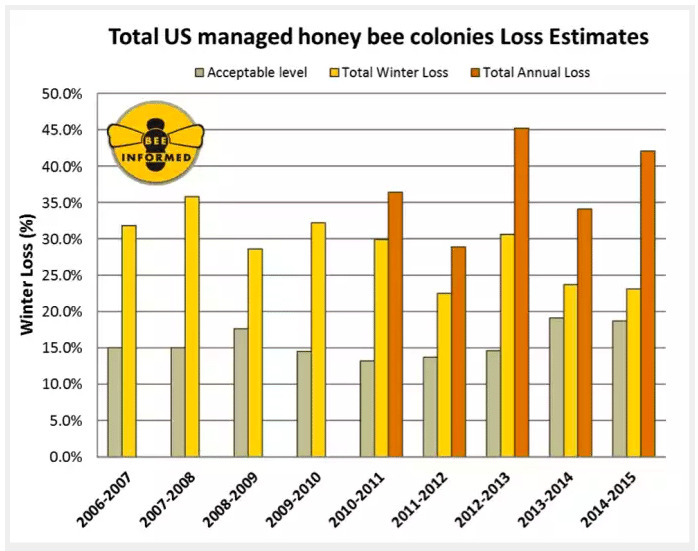Bee colony losses in the US decrease a tiny bit
Bee population numbers are important, so much so that data on colony information has been tracked for the past several years, but particularly the last handful of years. The Apiary Inspectors of America, Bee Informed Partnership, and United States Department of Agriculture recently published the preliminary data on honey bee colony losses as determined in the ninth annual national survey. Though there was still losses (as expected), the numbers are slightly better than the last year, with the losses dipping below the previous winter's numbers.
The latest information shows preliminary data on bee colony losses among beekeepers in the United States for the 2014/2015 winter season. A total of 6,128 US beekeepers provided data on their collective 398,247 colonies. Of these, a little over 67-percent are said to have had losses greater than the self-reported winter mortality rate that is considered acceptable — 18.7-percent.

Last year (the 2013/2014 winter season), the US had total losses estimated at 23.7-percent. This most recent winter season, however, that number of losses decreased by about 0.6-percent, reaching 23.1-percent. This is an improvement, if only slightly so. However, this is quite a bit lower than the 9-year average of 28.7-percent.
This marks the second year in a row when the bee colony losses were lower (quite a bit so) below that nearly decade-long average. During the summer of 2014, however, the bee colony losses were greater at 27.4-percent. Furthermore, some states suffered work annual losses than others — some exceeded 60-percent, for example, while others were as low as about 25-percent.

SOURCE: Bee Informed
